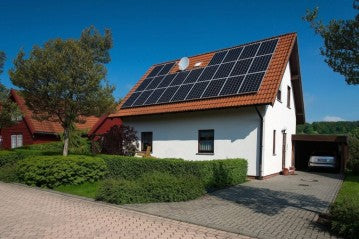
With the increasing popularity of solar power, many individuals are turning to renewable energy solutions to meet their power needs. One common question that arises among customers planning to purchase solar energy products is, "How many solar panels do I need to charge a 100Ah battery?" In this blog post, we will delve into the details to provide you with a comprehensive understanding of the factors involved in determining the number of solar panels required for charging a 100Ah battery.
Understanding Battery Capacity and Solar Panel Efficiency
To comprehend the requirements for charging a 100Ah battery, it's important to grasp the significance of Ah (Ampere-hour) in batteries. Ah represents the capacity of a battery to deliver a certain amount of current over a specific period. In our case, the 100Ah battery can provide 1 Ampere of current for 100 hours or 10 Amperes for 10 hours.
Solar panels, on the other hand, generate electricity from sunlight using photovoltaic cells. The efficiency of solar panels determines how effectively they convert sunlight into electrical energy. Higher efficiency panels produce more electricity for a given amount of sunlight.
Calculating the Energy Requirements
To calculate the energy requirements for charging a 100Ah battery, a simple formula can be used. The energy consumption in Watt-hours (Wh) is equal to the battery capacity in Ah multiplied by the battery voltage (V). For example, if the battery voltage is 12V, the energy consumption would be 100Ah * 12V = 1200Wh.
It's crucial to consider energy losses and inefficiencies in the charging process. During the conversion of solar energy into electrical energy, losses occur due to factors such as heat dissipation and electrical resistance. Therefore, to compensate for these losses, it's recommended to increase the energy consumption by around 10% to 20%.
Factors Influencing the Number of Solar Panels Needed
The number of solar panels required depends on several factors. First, consider the wattage and output of the solar panels. Higher wattage panels produce more electricity, reducing the number of panels needed. Additionally, regional solar insolation and climate factors play a significant role. Regions with more sunshine will require fewer panels compared to areas with lower solar insolation.
Tracking and optimizing energy usage can also impact the number of solar panels needed. By identifying and reducing energy wastage, you can optimize your energy consumption, potentially reducing the number of panels required.
Lastly, the battery charging time frame and usage patterns are essential. If you plan to charge your battery quickly, you may need more solar panels to generate a higher charging current.
Determining the Number of Solar Panels for a 100Ah Battery
Let's consider a hypothetical scenario to illustrate the process of determining the number of solar panels needed. Suppose we have a 100Ah battery with a 12V voltage, and we want to charge it within 5 hours. Taking into account the 10% to 20% energy loss, we increase the energy consumption to approximately 1320Wh.
Now, let's assume we have 300W solar panels with an efficiency of 20%. To determine the number of panels required, we divide the energy consumption (1320Wh) by the energy generated per panel per hour (300W * 0.2 = 60Wh). In this case, we would need approximately 22 panels to charge the 100Ah battery within 5 hours.
Practical Recommendations and Tips
1. When choosing solar panels, consider their wattage, efficiency, and reliability. Opt for high-quality panels to ensure long-term performance and efficiency.
2. To maximize charging efficiency, keep the solar panels clean and free from debris.
3. Regular maintenance, such as cleaning and inspection, helps maintain optimal performance.
4. Monitoring your solar panel system is essential to identify any issues or inefficiencies promptly. Keep track of the energy generated and consumed to optimize usage and make informed decisions.
Conclusion
Determining the number of solar panels needed to charge a 100Ah battery involves considering battery capacity, solar panel efficiency, energy losses, solar insolation, and usage patterns. By carefully calculating the energy requirements and accounting for various factors, you can determine the appropriate number of solar panels for your specific needs.
As you embark on your solar power journey, remember to choose reliable and efficient solar panels, prioritize maintenance, and monitor your system for optimal performance. By harnessing the power of the sun, you can contribute to a sustainable future while enjoying the benefits of clean and renewable energy.
We hope this blog post has shed light on the question of how many solar panels you need to charge a 100Ah battery. If you are looking for the best power banks, look no further than Ecgsolax. We have the best solar batteries at 12V/24V48V 100Ah/200Ah. And If you have any further questions or need assistance in choosing the right solar energy products, feel free to reach out to our team. Together, let's embrace the power of solar energy and make a positive impact on the environment.

0 Kommentare